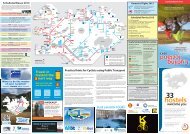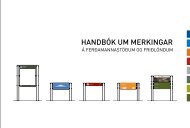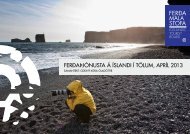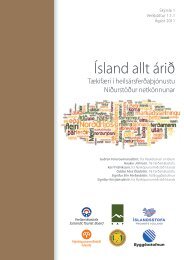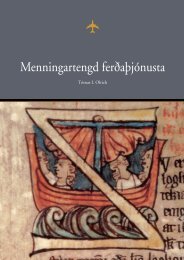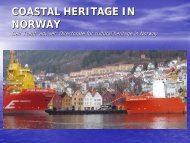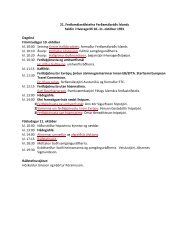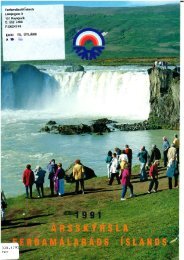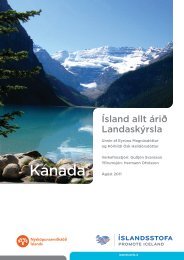Untitled
Untitled
Untitled
Create successful ePaper yourself
Turn your PDF publications into a flip-book with our unique Google optimized e-Paper software.
signification, not the least in tourism, is actively involved in coconstructing<br />
that which is re-presented. Tourism does not exist apart from<br />
our naming, defining, or classifying “it”. The name is not the thing named.<br />
It is through words and concepts that we construct our knowledge claims<br />
about tourism, and therefore it is important to systematically pay close<br />
attention to them.<br />
One central message of the chapter has thus been about the issue of<br />
representation, and it deserves to be repeated here. The naïve or simplified<br />
taken-for-granted notions of representation, as mirroring or objectively<br />
corresponding to a separate reality “out there”, are not adequate or valid.<br />
This does not mean, however, that there is no such thing as “tourism”<br />
outside of our internal significations in language, nor does it imply that we<br />
are forever locked up in a closed idealist realm of signs and words. Tourist<br />
destination images are always packaged around a series of selected real<br />
and imagined features, and they are being constructed and manufactured<br />
for specific touristic purposes by marketers and researchers alike. A way<br />
of capturing this duality is to follow Kirschenblatt-Gimblett (1998, p. 9)<br />
stating that:<br />
Tourists travel to actual destinations to experience virtual places.<br />
What we refer to as “tourism and tourist imaginationings” involve,<br />
and are highly dependent upon, processes of signification that translate the<br />
physical matters of travelling, locations, and whatever material resources<br />
that humans meet as bodies with senses, into various touristic meanings<br />
and values. It is, in other words, the art of bringing meaning and matter<br />
together for particular tourism and tourist purposes. This process of<br />
translating and transforming is necessary in order for goods, services and<br />
sights on the Earth to be appropriated for tourism purposes and become<br />
tourism commodities.<br />
And by these final remarks we are already on the move to the next<br />
chapter where we will open the door to tourism theory.<br />
29



